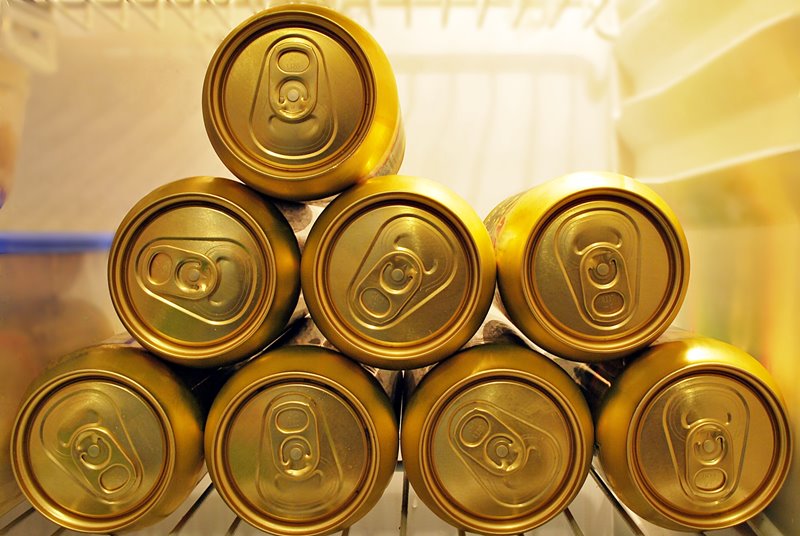U.S. Ready-to-Drink market sees shift in growth dynamics as malt-based seltzers reach saturation
Consumer preferences shift towards higher-quality, spirit-based beverages
2023-11-29

The U.S. ready-to-drink (RTD) market, a dynamic segment within the beverage alcohol industry, is undergoing significant changes in its growth pattern, according to the latest report by IWSR Drinks Market Analysis. Despite a flattening in volume growth, the market experienced a notable increase in value in the last year, signaling a shift in consumer preferences and market dynamics.
In 2022, the U.S. RTD market's growth in volume was stagnant, marking an end to a period of rapid expansion. However, the market's value rose by 6%, reaching $18.2 billion. This increase is attributed to a combination of inflation and a trend towards premiumisation in the market. IWSR's forecast predicts a moderate volume growth for the maturing category, with a compound annual growth rate (CAGR) of +1% from 2022 to 2027, and a more rapid increase in value, expected to reach $21.1 billion by 2027.
A key factor in this changing landscape is the bifurcation in the market. Malt-based hard seltzers, once a driving force in the RTD sector, are now in decline, losing volume to spirit-based hard seltzers, RTD cocktails, and Flavored Alcoholic Beverages (FABs). This trend reflects the increasing sophistication and premium nature of RTD cocktails and spirit-based products, which are gaining popularity due to their perceived higher quality and the demand for premium ingredients.
The market's maturity is also evident in the slowing pace of new entrants. Data reveals that 81% of current RTD drinkers have been in the category for three or more years. However, the frequency of consumption is on the rise, with 45% of RTD consumers indulging weekly in 2023, an increase from 38% in 2022.
"The decline in hard seltzer consumption can be largely attributed to consumer fatigue, product overload, and a general reduction in alcohol consumption post-pandemic," says Marten Lodewijks, Consulting Director – Americas, at IWSR.
Despite the downturn in hard seltzers, RTDs continue to capture a larger share of the total beverage alcohol market in the U.S. In 2018, RTDs accounted for 2.7% of total beverage alcohol servings; by 2027, this figure is projected to reach 7.9%. This growth is expected to come at the expense of beer and wine, particularly in settings traditionally dominated by these beverages, such as outdoor events and dinner parties.
In line with the trend towards premiumisation, the RTD market has seen the largest price increase among all beverage alcohol categories in 2022, over 6%. New Product Development (NPD) is increasingly focusing on premium cues, including spirit-based RTDs, fuller flavors, and higher alcohol by volume (ABV) products.
Agave-based spirits are gaining traction as a preferred RTD base, especially among younger legal drinking age (LDA) consumers. In the spirits market, volumes of agave-based spirits increased by +12% in 2022, with a forecasted volume CAGR of +11% from 2022 to 2027.
The on-trade channel (bars and restaurants) is also showing increased interest in RTDs, with 39% of consumers purchasing RTDs in this channel in 2023, up from 35% the previous year. This trend is particularly strong among LDA Gen Z consumers.
In contrast, the ready-to-serve (RTS) segment has seen a decrease in launches and sales volumes in the first half of 2023. The focus in this sub-category is on higher-ABV cocktails and long drinks, with a leaning towards premium-and-above price segments.
This comprehensive analysis by IWSR highlights the evolving landscape of the U.S. RTD market, characterized by a shift towards premiumisation, changing consumer preferences, and a diversification of product offerings.
Founded in 2007, Vinetur® is a registered trademark of VGSC S.L. with a long history in the wine industry.
VGSC, S.L. with VAT number B70255591 is a spanish company legally registered in the Commercial Register of the city of Santiago de Compostela, with registration number: Bulletin 181, Reference 356049 in Volume 13, Page 107, Section 6, Sheet 45028, Entry 2.
Email: [email protected]
Headquarters and offices located in Vilagarcia de Arousa, Spain.